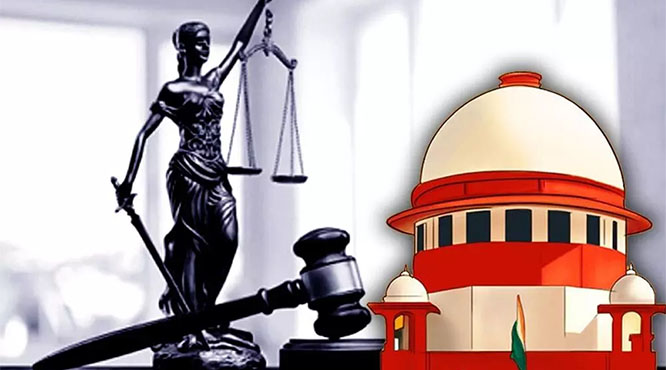
New Delhi: Downloading and watching child pornography is an offence under the Protection of Children from Sexual Offences (POCSO) Act, the Supreme Court ruled today in a landmark judgment on the stringent law to prevent child abuse.
The bench of Chief Justice of India DY Chandrachud and Justice JB Pardiwala set aside the Madras High Court order that had ruled that merely downloading and watching child pornography was not an offence under the POCSO Act. The Supreme Court noted that the high court had committed an "egregious error" in passing the judgment.
The Madras High Court's order had come in a case in which a 28-year-old man was charged with downloading child pornography on his phone. The court had quashed the criminal proceedings against the man and said children these days are grappling with the serious issue of watching pornography and society must be mature enough to educate them instead of punishing them.
The Supreme Court today restored the criminal proceedings against the man.
At the outset, Justice Pardiwala thanked the Chief Justice for the opportunity to pen this judgment. The order focused on Section 15 of the POCSO Act which lays down punishment for the storage of pornographic material involving children.
"Any person who stores any pornographic material involving a child and fails to report or destroy it is punishable with a fine of not less than five thousand rupees., and repeat offence will be punishable with fine of not less than ten thousand rupees. If the material is stored for further transmitting or propagating, then along with fine, it is punishable with upto three years of imprisonment. For storing child pornographic material for commercial purpose is punishable with three to five years of imprisonment, and in subsequent conviction, upto seven years of imprisonment," the Section says.
Justice Pardiwala said that in this case, mens rea is to be gathered from actus rea -- mens rea refers to the intent behind the crime and actus rea is the actual criminal act.
"We have said on the lingering impact of child pornography on the victimisation and abuse of children... We have suggested to the Parliament to bring an amendment to POCSO... so that child pornography can be referred to as child sexually abusive and exploitative material. We have suggested an ordinance can be brought in. We have asked all courts not to refer to child pornography in any order," the bench said.
The Chief Justice called it a "landmark judgment" and thanked Justice Pardiwala.







Comments
Add new comment